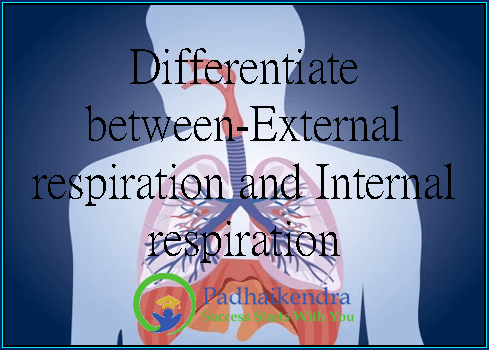External respiration and internal respiration are two different processes that occur in the body during respiration.
External respiration refers to the exchange of gases (oxygen and carbon dioxide) that occurs between the lungs and the environment. During external respiration, oxygen is taken in through the respiratory system and diffuses into the bloodstream through the walls of the alveoli in the lungs. At the same time, carbon dioxide in the bloodstream diffuses out of the capillaries surrounding the alveoli and into the air spaces of the lungs. This exchange of gases occurs during inhalation and exhalation.
Internal respiration, on the other hand, refers to the exchange of gases that occurs between the blood and the body tissues. After oxygen diffuses into the bloodstream during external respiration, it is transported to the body’s tissues via the circulatory system. At the tissue level, oxygen diffuses out of the capillaries and into the cells, where it is used in cellular respiration to produce energy. During this process, carbon dioxide is produced as a waste product and diffuses out of the cells into the bloodstream. Carbon dioxide is then transported back to the lungs via the circulatory system to be expelled from the body during exhalation.
In summary, external respiration refers to the exchange of gases that occurs between the lungs and the environment, while internal respiration refers to the exchange of gases that occurs between the blood and the body tissues. External respiration involves the intake of oxygen and the release of carbon dioxide, while internal respiration involves the release of oxygen and the intake of carbon dioxide. Both external and internal respiration are important processes in the body’s overall respiratory system, as they ensure that the body’s cells receive the oxygen they need to function and that waste carbon dioxide is removed from the body.





